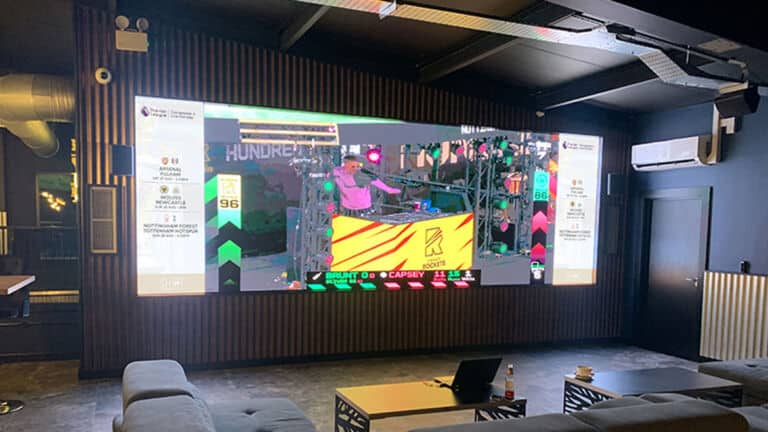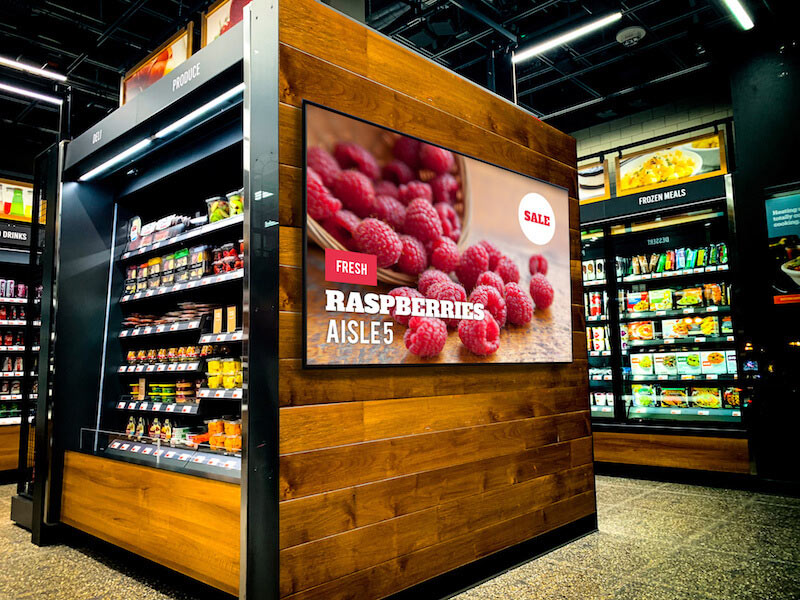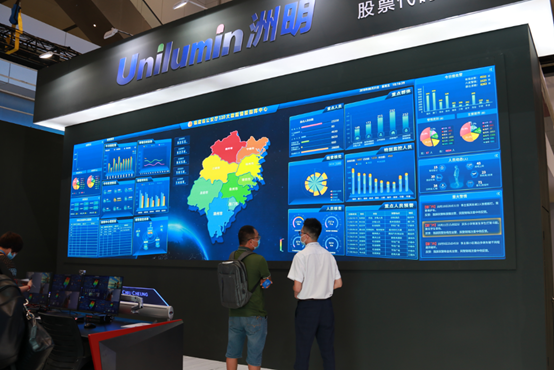Good Info For Deciding On Lightweight Led Screen
Wiki Article
What Is The Significance Of Pixel Pitch And Resolution When Choosing Led Displays?
When researching LED displays, resolution and pixel pitch are important factors to consider. Both of these factors influence the clarity, detail and overall appearance that the display provides. These two components are important:
1. Image Quality
Pixel Pitch: Pixel pitch is the space between the LED center and its neighboring pixel. A lower pitch means that the LEDs are having greater spacing, resulting in higher resolution. This translates directly into sharper, more detailed images, particularly for images that contain high-quality text or fine details.
Resolution: The total amount of pixels displayed on the screen. It is usually expressed in terms of width and height (e.g. 2048x1080). A higher resolution display has more clarity, and can create a more immersive viewing experience.
2. Distance to view
Pixel pitch has an important impact on the viewing distance. If the display is seen at a close distance, as in indoor screens for exhibitions, retail displays or displays placed within, then a lower (and therefore greater) pixel pitch and resolution is required to prevent the display from appearing pixelated. For outdoor billboards and large-scale displays that are viewed from a distance an increased pixel pitch may suffice since the individual pixels are not apparent from a distance.
3. Content Versatility
Displays with a smaller pixels pitch and a greater resolution are able to handle a greater range of content types, from high-definition videos to intricate graphics and small text. This versatility is crucial for any application that requires fluid content, such as digital signage, broadcasting studios or control rooms.
4. Cost implications
Although a smaller resolution provides better image quality but it also increases the cost of the display. A larger resolution screen will be more costly due to the greater quantity of LEDs required. Therefore, it is essential to balance the need for high resolution and the budget, taking into account the purpose and the viewing distance.
5. Application Specificity
The significance and value of pixel pitch may differ according to the software you're using
Indoor Displays require a smaller Pixel spacing (e.g. between 1.2mm up to 2.5mm) for excellent quality even at close-up distances.
Outdoor displays: They could have larger pixel pitch (e.g. 4mm - 10mm) as they will be seen from greater distances. The resolution of the display isn't so important.
6. Product longevity and its upgradeability
As technology for display advancements and technology improves, the pixel pitch has decreased which allows for higher resolutions in smaller spaces. A display with a high pixel pitch will remain relevant for longer, and lessen the need for updates.
Conclusion:
Pixel pitch is a key element in an LED display's performance. It influences image quality, visual experience, aswell as content versatility. For you to ensure that you select an LED display that is compatible with your needs, take into consideration these factors when you are researching LED displays. Have a look at the top creative led displays for blog examples including led wall tv, led panel transparent, led display rental, led wall, display screen led, advertising tvs, transparent led screen, transparent led panel, led transparent display, flexible led screen and more.

How Important Is Refresh Rate When Researching Led Displays?
What is the importance of Refresh rate when researching LED displays? Here are some reasons why it is crucial to refresh:
1. Image Smoothness and Clarity
Definition: The refresh rate is the amount of times per second (measured in Hertz, or Hz) that the display refreshes its image. A higher rate of refresh results in smoother motion and reduces flickering.
Important: A high refresh rate (3,840 Hz and above) is important for displays that display videos, animations or images that are fast-moving. This will ensure that the motion appears smooth, with no stuttering, or tears. This is essential in applications such as digital signage, sports arenas, and concerts where a smooth visual experience improves the viewer's experience.
2. Flickerless Performance
Flicker: Displays with low refresh rates may produce noticeable flickering, particularly when seen by a camera that is slow-motion. Flickering can cause eye fatigue and strain, which makes it difficult to focus on the screen for extended periods of time.
Application: In environments in which the display will either be filmed and photographed (such in broadcasting studios) or recorded, like a events or broadcasting facilities, a high rate of refreshment can reduce flickering and ensure that the footage is recorded with no visual artifacts.
3. Visual Quality in Different Lighting Situations
Effect on Brightness: High refresh rates can also influence the display's performance in varying lighting conditions. For instance, if the surroundings are brightly lit with a lot of light, a fast rate of refreshment can help ensure consistency in image quality and consistency. This reduces any visible flickering that can affect the display’s effectiveness.
Use: This can be helpful in outdoor displays or stage events in which the lighting can change frequently.
4. Content Compatibility
Synchronization: The refresh rate must be in sync with the source of the content for example, cameras, video playback systems, or live broadcast feeds. If the refresh rate does not coincide with the content it can cause juddering or mismatched images that can negatively impact the experience of watching.
Application: In professional environments where content is sourced from a variety of sources (such as TV studios or large-scale events) It is crucial that the speed of refresh is equal to the frame rate.
5. Enjoy the best viewing experience
Motion handling: High-refresh rates are able to handle fast-moving contents better and reduce motion blur and provide a clearer image. This is particularly useful in applications that require fast-paced actions, such as in sports broadcasting.
Application: A high-refresh rate is perfect for venues that broadcast sports, games, or content with high-action. The viewers can see every single particular.
6. Reduced eye strain
Comfort: Low rates of refreshing can result in eyestrain during long periods of viewing. This is most likely in environments where the user is near to the display or where the content has been viewed for an extended duration.
Application for retail, office, or public environments where people will be viewing the display for a long time period, a higher refresh rate can create a comfortable and engaging setting.
7. Performance of Rental and Staging Applications
Flexibility. For LED displays for rental and staging, they are used in various settings and can display different types of information. A rapid rate of refresh guarantees that the display will be able to meet any event's needs, regardless of whether the event is live performances or corporate presentations.
Application: High refresh rates can be beneficial in settings where displays have to be able to quickly adapt to changing content and audience demands.
Conclusion:
The refresh rates are essential to LED display. They directly affect the user's comfort, flexibility and quality of the display. This is crucial for applications that require active content, live events, and for areas where the display will be used for an extended period of time. If you are looking into LED displays for your needs, take a look at the refresh rate. It will guarantee that the display performs well and is flicker-free, improving the user's experience. Take a look at the top rated led rental screen for site advice including transparent screen, outdoor digital display, led board rental, led in the wall, led in walls, flexible led display, led board rental, flexible led screen, outdoor digital display, led in walls and more.

What Is The Importance Of Calibration And Color Accuracy In Research On Led Display?
It is vital to pay attention to the accuracy of colors and calibrating LED displays when you are studying them, particularly if they are used in areas where the integrity of the brand and its visual appeal are important. What are the significance of these aspects?
1. Realism, Quality of Vision and authenticity
Color Accuracy refers the accuracy of LED displays in reproducing the colors desired by content creators. Color accuracy that is high ensures that videos and images look vibrant, real and clear. They also appear without distortions.
Importance for applications such as advertising, broadcasting or retail and professional presentations, the correct reproduction of colors is essential to maintain the aesthetic appeal and communicate the message effectively.
2. Brand Integrity
Consistency in branding: For businesses that rely on specific colors for branding, color accuracy is essential. Any deviation from the right color scheme could harm the identity of the brand.
Application: Colors of the brand must be maintained accurately in all retail displays and corporate environments.
3. Engagement and Impact on Audience
Displays that have superior color accuracy provide an enhanced viewing experience. Correct colors can convey emotions and messages more effectively which enhances the overall effect of the screen.
Application for places of entertainment, museums or any setting where the content is created to trigger an emotional response, color accuracy guarantees that the viewers experience the content in the way it was intended.
4. Content Creator Intent
Faithful Representation - Artists, creators and designers typically spend a lot of time creating images using specific color palettes. Their work is displayed exactly as it was intended with an LED display that replicates exact colors.
Application: In fields such as digital art, photography, or film in which colors play crucial roles in storytelling and aesthetic appeal, it's crucial to ensure that the colors are accurate. This will ensure that the ideas of the creator.
5. Calibration to ensure Consistency
Unevenness of Panels: The calibration ensures that LED panels within the display are of equal color and brightness, thus avoiding any inconsistencies. This is vital for large-scale displays made of several panels.
Even the best displays will fade in color over time. To ensure consistency and to meet the highest standards of quality, regular calibration is required.
Applications For video walls or large outdoor displays and multi-panel layouts the need for calibration is essential to ensure an even and consistent appearance. This is vital to ensure professional installation.
6. Impact of Content Types
Different Content Needs: Various kinds of content have distinct requirements for color accuracy. For example, medical image displays require a high level of precision for accurate diagnosis, while a display for advertising could be more concerned with vividness and saturation.
Application: In fields such as high-end retail, design medical imaging, or medical imaging, having precisely calibrated color settings is vital to ensure that the display meets the demands of the content.
7. Technology and Specifications
Bit Depth (and Gamut) Displays that have high bit depths as well as displays that have wide color ranges (like DCI P3 or rec. 2020 provides better color accuracy. It also allows for a more colors. When choosing a display, it is crucial to be aware of these specifications.
Advanced Calibration Tool: New LED displays come with the latest calibration and software tools that allow precise adjustments. This makes sure that the display's accuracy throughout its life.
Application: If you work in a profession where color accuracy, calibration or accuracy are important in industries such like graphic design, film and high-end advertising then investing in displays that are capable of superior color accuracy calibration, or accuracy, is essential.
Conclusion:
In order for LED displays to provide visuals of high quality that are in line with the brand's standards and in line with the creators of content goals, accuracy in color and calibration is crucial. If the display will be used for entertainment, advertising or professional presentations as and in specific fields like medical imaging, precise color reproduction will help to achieve the desired impact while preserving the integrity of the visual. When looking at LED displays, it is important to prioritize accuracy in color in calibration, consistency, and consistency especially if the application calls for precise colors. See the best outdoor fixed led display for blog advice including video wall church, screen led display, outdoor display led, outdoor led display screen, outdoor led panel, outdoor led screen display, tv led wall, led rental screen, led screen transparent, outdoor screen led and more.
